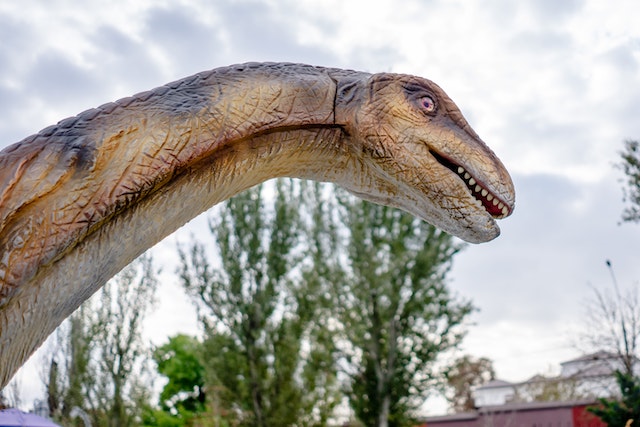Prehistoric animals developed various strategies to survive in times of drought and famine, allowing them to adapt to and endure challenging environmental conditions. While specific survival tactics varied across species, here are some general strategies employed by prehistoric animals:
1. Migration: Many prehistoric animals were capable of long-distance migrations to seek out more favorable habitats and food sources during periods of drought or famine. By moving to regions with better conditions and more abundant resources, they could increase their chances of survival.
2. Dietary Flexibility: Prehistoric animals often possessed adaptations that allowed them to exploit a wide range of food sources. This dietary flexibility enabled them to switch to alternative food items when their primary resources became scarce. Some species developed specialized feeding mechanisms or digestive systems that enabled them to process a variety of plant or animal matter.
3. Hibernation or Torpor: Some prehistoric animals had the ability to enter hibernation or torpor during times of limited food availability. By reducing their metabolic rates and entering a state of lowered activity, these animals could conserve energy and survive for extended periods with minimal food intake.
4. Storage of Food Reserves: Certain prehistoric animals stored food reserves during periods of abundance to sustain themselves during times of scarcity. This strategy involved hoarding and caching food resources, such as nuts, seeds, or carcasses, which could be retrieved and consumed when food was scarce.
5. Water Conservation: Drought conditions often result in limited water availability. Prehistoric animals developed various adaptations to cope with dehydration and conserve water. Some species had efficient water reabsorption mechanisms in their kidneys, while others could obtain water from their diet or extract moisture from the environment.
6. Behavioral Adaptations: Prehistoric animals exhibited behavioral adaptations to cope with drought and famine. For example, they may have adjusted their foraging strategies, becoming more opportunistic or focusing on high-energy food sources. Some species formed social structures or cooperative groups, allowing them to better locate and access limited food resources.
7. Reproductive Strategies: During times of food scarcity, prehistoric animals may have adjusted their reproductive behaviors to conserve resources. They might have reduced or delayed reproduction, producing fewer offspring until conditions improved and resources became more abundant.
It is important to note that the specific survival strategies employed by prehistoric animals varied based on their ecological niches, evolutionary adaptations, and the specific challenges they faced. These strategies were not universal but evolved in response to the unique environmental conditions and available resources of their respective habitats. By studying these survival strategies, scientists gain insights into the remarkable adaptability and resilience of prehistoric species in the face of challenging circumstances.











